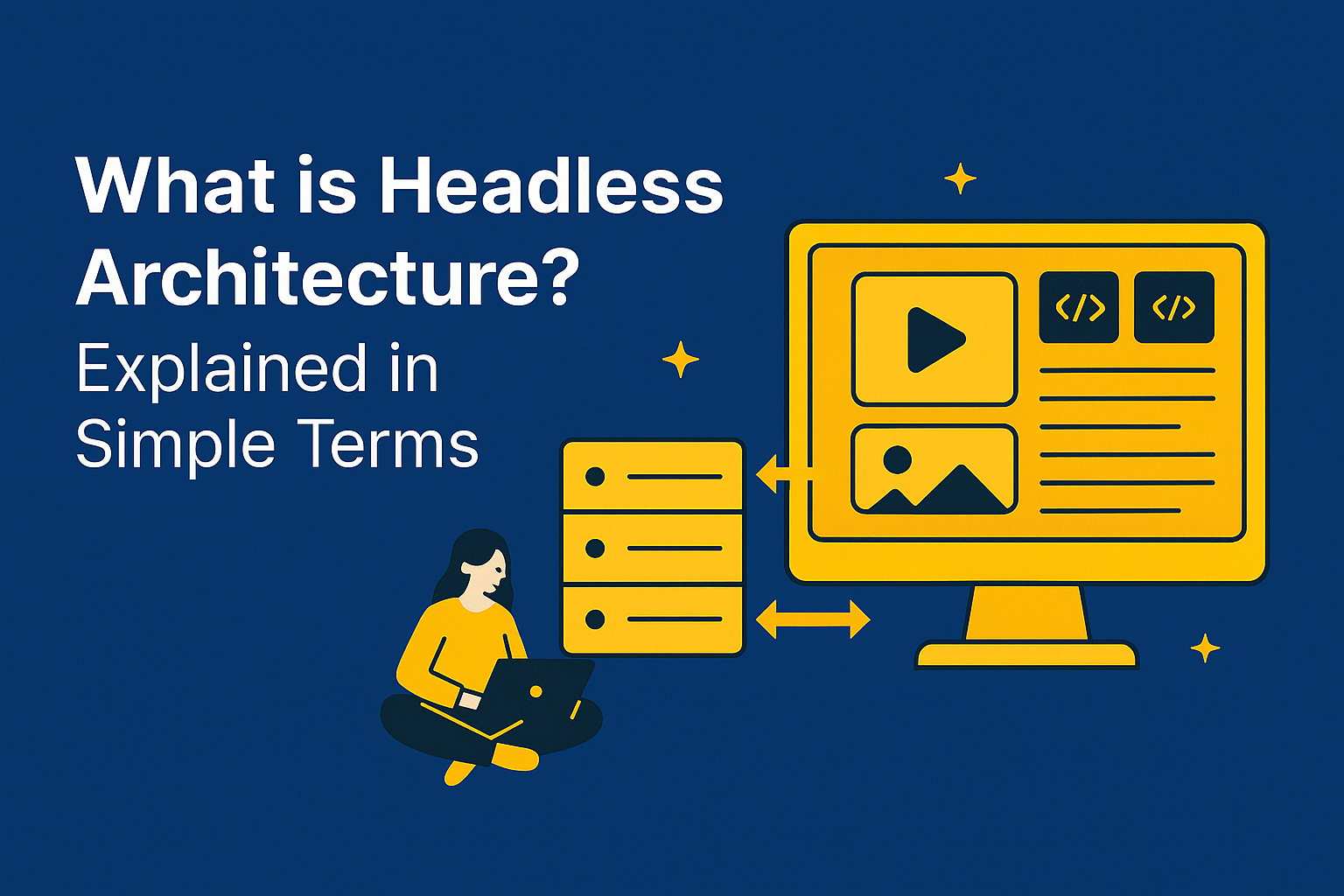A Future-Ready Guide for Modern Web Development.
In the fast-moving world of web development, flexibility isn’t a luxury — it’s a necessity. With customer expectations spanning websites, mobile apps, smartwatches, and even your refrigerator screen (yes, that’s a thing now), traditional website structures are struggling to keep up. Enter headless architecture — a concept that may sound like something out of a Halloween tech conference, but is actually the smartest way to future-proof your digital presence.
What is Headless Architecture?
Let’s start simple. Headless architecture refers to the decoupling of the front-end (what users see) from the back-end (where your data lives). Instead of being trapped in an “all-in-one” platform like WordPress where everything is tightly connected, the frontend and backend in a headless setup communicate via APIs.
Imagine a vending machine that lets you choose your display and snack combo without forcing you to buy the same candy bar everyone else does. That’s what headless offers: freedom.
In essence, what is headless architecture? It’s a structure that gives developers the power to design custom user experiences while maintaining a powerful backend that doesn’t interfere.
Headless vs. Monolithic Architecture
Monolithic CMS platforms like WordPress or Drupal bundle everything into a single block — database, templates, logic, you name it. Easy to start with, yes. But try scaling, and suddenly it’s like adding floors to a house made of Jenga blocks.
Headless platforms, on the other hand, let you renovate and upgrade any part without risking a collapse. Whether it’s launching a mobile app or adding AR product previews, the decoupled nature gives your brand breathing room and tech flexibility.
Headless, Microservices, and Composable: Know the Difference
You’ll often hear microservices and composable architecture thrown around with headless. Here’s how they differ:
- Headless: Separates front and back, focuses on presentation flexibility.
- Microservices: Breaks backend into smaller, interchangeable services.
- Composable architecture: Combines both, letting you “compose” the ideal tech stack from best-in-class solutions.
Think of headless as choosing your own adventure — composable is choosing your adventure and building your own map.
Key Features of Headless Architecture
- API-first design: Frontend and backend talk through APIs, making integrations easy.
- Omnichannel readiness: Push content to websites, mobile apps, kiosks, or anything with a screen.
- Framework freedom: Developers can use React, Vue, Angular, or even something cooler they haven’t named yet.
- Faster time to market: Developers and marketers work in parallel, not waiting on each other like in a sitcom relationship.
- Reusable content blocks: One piece of content, endless applications.
Headless CMS Explained
A headless CMS manages content creation and storage — but doesn’t dictate how it’s displayed. It delivers content via APIs, allowing it to show up on websites, apps, smartwatches, or even your fridge (again, yes, this is happening).
Popular options like Contentful, Sanity, Storyblok, and Hygraph have become go-to choices for headless content management.
So, what is headless architecture doing differently? It unshackles content teams from rigid layouts and gives developers creative freedom to design the frontend experience independently.
Top Benefits of Going Headless
- Speed – Sites built with headless frameworks load faster, improving SEO and conversions.
- Scalability – Easily integrate or swap technologies without redoing everything.
- Better UX – Customize interfaces without backend limitations.
- Security – Fewer access points mean fewer risks.
- Omnichannel capability – “Create once, publish everywhere” becomes reality.
Is It Right for Everyone? (Spoiler: Not Always)
Going headless isn’t a silver bullet. It’s not ideal for teams without technical resources or for businesses that just need a simple, static website. You may want to wait if:
- You need drag-and-drop simplicity without dev help.
- Your team is small and lacks frontend/backend specialists.
- Your current CMS does the job, and you don’t plan to scale much.
But if you’re aiming for omnichannel dominance, flexible design, or faster updates — it’s time to consider what is headless architecture and why it may be your best investment yet.
Real-World Success Stories
Big names already reaping the headless rewards include:
- Nike: Leveraged React and Node.js for blazing-fast mobile experiences.
- Target: Unified cross-channel retail touchpoints for smoother customer journeys.
- Freddie’s Flowers: Launched multilingual sites with ease using ButterCMS.
- PickFu: Built a high-performance headless site to let devs and marketers work independently.
So yes, headless isn’t just for tech giants — smaller businesses with big ambitions can benefit just as much.
Making the Migration
Planning to go headless? Here’s what to expect:
- Start with a proof of concept.
- Choose your headless CMS (Contentful, Hygraph, etc.).
- Define your APIs and frontend frameworks.
- Partner with experienced developers (or us — more on that below).
- Roll out in phases and train your team accordingly.
Conclusion: The Future is (Headless) Now
So, what is headless architecture in one sentence? It’s the future-ready, API-driven approach that empowers brands to move fast, scale smart, and build standout digital experiences across any channel.
Yes, monolithic systems still serve a purpose for simple use cases. But if you want your website to evolve with your customers — not lag behind — going headless is the smarter move.
Need Help Going Headless? We’re Here
At Digital Marketing Company in Chandigarh, we specialize in modern web development strategies — and that includes helping businesses of all sizes understand, implement, and scale with headless architecture. If you’re asking “what is headless architecture and how can it help my business?”, you’re asking the right questions — and we’ve got the right answers.
Let’s build something flexible, scalable, and fast — together.

